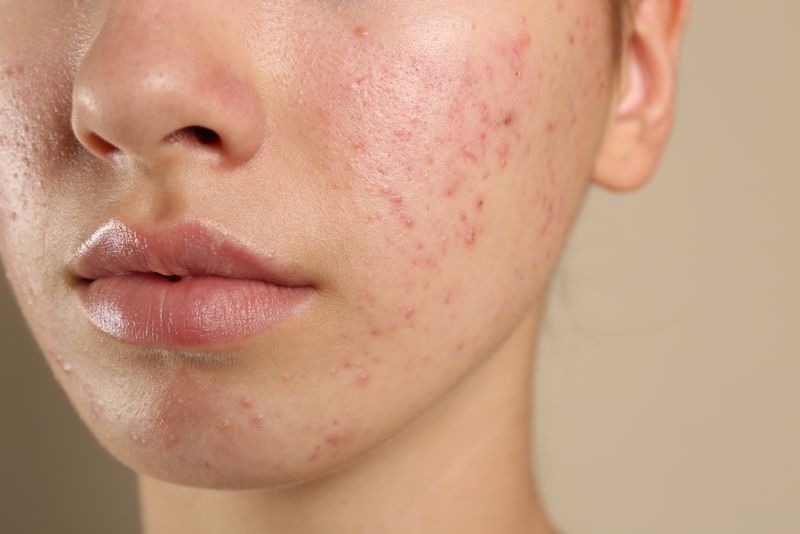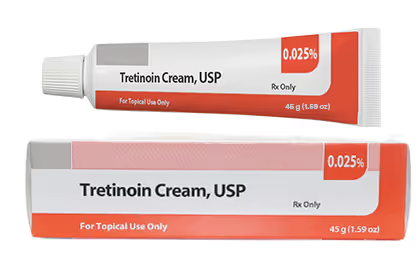Navigating the world of acne treatments can feel overwhelming. With countless products on the shelves and conflicting advice online, finding a solution that actually works is a common struggle. For many, the journey to clear skin involves trying numerous over-the-counter options with little to no success, leading to frustration and a feeling of hopelessness. If this sounds familiar, you should know that effective, clinically-proven treatments for acne exist, and one of the most trusted is Clindamycin. This prescription medication has been a cornerstone of dermatological care for decades, helping thousands of patients achieve significant improvements in their skin.
Understanding what Clindamycin is, how it works, and what to expect from treatment is the first step toward taking control of your skin health. This guide will break down everything you need to know about this powerful acne-fighting medication, from its different forms to its role in a comprehensive skincare plan. Our goal is to provide clear, expert information to empower you on your path to healthier skin.
What Exactly Is Clindamycin?
Clindamycin is an antibiotic medication that is highly effective in treating acne. It belongs to a class of antibiotics known as lincosamides. While antibiotics are often associated with treating internal infections, certain ones, like Clindamycin, are exceptionally well-suited for dermatological use. Its primary function in skincare is to combat the specific bacteria on the skin that contribute to the formation of acne pimples, pustules, and cysts.
The reason Clindamycin is so widely used by medical professionals for acne is its dual-action approach. It not only reduces the population of acne-causing bacteria but also possesses significant anti-inflammatory properties. This is crucial because acne is fundamentally an inflammatory condition. The redness, swelling, and discomfort associated with breakouts are all signs of inflammation, which Clindamycin helps to calm, leading to clearer and less irritated skin.
How Clindamycin Fights Acne at the Source
To understand how Clindamycin works, it helps to first understand how a pimple forms. Your skin is covered in tiny pores, which are the openings to hair follicles. Inside each follicle is a sebaceous gland that produces an oily substance called sebum. Normally, sebum travels up the hair follicle and out of the pore, helping to keep your skin moisturized. However, acne begins when this process goes wrong.
Excess sebum production can mix with dead skin cells, creating a plug that clogs the follicle. This clogged environment is the perfect breeding ground for a type of bacteria known as Cutibacterium acnes (C. acnes), formerly called Propionibacterium acnes. As these bacteria multiply rapidly in the clogged follicle, they trigger an inflammatory response from your body’s immune system. This results in the red, swollen lesions we recognize as acne.
Clindamycin intervenes in two critical ways:
- Antibacterial Action: Clindamycin works by inhibiting the growth of C. acnes bacteria. It doesn't necessarily kill the bacteria outright but prevents them from multiplying. By stopping bacterial protein synthesis, it effectively reduces the overall bacterial load on the skin. Fewer bacteria mean fewer clogged follicles become inflamed and infected.
- Anti-Inflammatory Action: Beyond its antibacterial effects, Clindamycin directly soothes the inflammation that makes acne so visible and painful. It helps to reduce the redness and swelling of existing pimples, allowing them to heal more quickly and making your overall complexion appear calmer. This is a key benefit that sets it apart from many over-the-counter treatments.
At Honeydew, our providers leverage this dual-action approach, prescribing Clindamycin as part of a personalized plan to target acne from multiple angles.
Forms of Clindamycin for Acne Treatment
Clindamycin is not a one-size-fits-all treatment. It is available in several different forms, and a licensed medical provider will determine the most appropriate one for your specific type of acne, skin sensitivity, and lifestyle. The two main categories are topical and oral.
Topical Clindamycin: A Direct Approach
For most cases of mild to moderate inflammatory acne, topical Clindamycin is the preferred first-line treatment. Applying the medication directly to the skin concentrates its effects where they are needed most, targeting bacteria and inflammation at the source while minimizing its absorption into the rest of the body. This targeted approach is often effective and generally associated with fewer side effects than oral medications.
Topical Clindamycin comes in various formulations, and your provider can help choose the one best suited for your skin type:
- Gels: Gels are often alcohol-based, which can be beneficial for those with very oily skin as they tend to be drying. They are lightweight and absorb quickly.
- Lotions and Creams: These formulations are more moisturizing and are often recommended for individuals with normal, dry, or sensitive skin. They can help counteract the potential drying effects of the medication itself.
- Solutions: Clindamycin solutions are very thin and liquid-like. They are applied with a dabber applicator and are useful for covering larger areas of the skin, such as the back or chest.
- Foams: Medicated foams are easy to spread and are absorbed rapidly, offering a convenient option for application on hairy areas of the body.
Oral Clindamycin: For More Persistent Cases
In some situations, topical treatments alone may not be sufficient to control acne, particularly if it is more widespread, persistent, or severe. In these instances, a provider may prescribe oral Clindamycin. Taken as a capsule, this form works systemically, meaning it is absorbed into the bloodstream and fights acne-causing bacteria and inflammation from the inside out.
Oral antibiotics are typically reserved for cases where topical treatments have not yielded the desired results. Due to the risk of developing bacterial resistance and potential for more significant side effects, providers usually prescribe oral Clindamycin for a limited duration and often in combination with a topical agent that is not an antibiotic, like a retinoid or benzoyl peroxide.
The Importance of Combination Therapy
Modern dermatology rarely relies on a single medication to treat a complex condition like acne. The most effective treatment plans are often comprehensive, utilizing multiple medications that work together synergistically. Clindamycin is frequently prescribed as part of a combination therapy regimen to enhance results and prevent a common issue with antibiotic use: bacterial resistance.
When an antibiotic like Clindamycin is used alone for an extended period, the C. acnes bacteria on the skin can adapt and evolve, becoming resistant to the medication's effects. This can cause the treatment to lose its effectiveness over time. To combat this, providers almost always pair Clindamycin with another type of acne-fighting ingredient.
Clindamycin with Benzoyl Peroxide
The most common and highly recommended combination is Clindamycin with benzoyl peroxide. Benzoyl peroxide is an antimicrobial agent that kills C. acnes bacteria through an oxidative mechanism, a process to which bacteria cannot develop resistance. When used together, Clindamycin reduces the bacterial population, and benzoyl peroxide helps keep it that way while preventing resistance. This powerful duo is available in single-product prescription formulations, making application simple and convenient.
Clindamycin with Retinoids
Another highly effective pairing is Clindamycin with a topical retinoid, such as Tretinoin. Retinoids are vitamin A derivatives that work by increasing skin cell turnover. This helps to prevent dead skin cells from clogging pores in the first place, addressing the initial step in acne formation. When combined, Clindamycin works to clear existing bacterial inflammation, while the retinoid works to prevent new blemishes from forming. This combination tackles acne from two different fronts, leading to more comprehensive and lasting results. At Honeydew, our providers specialize in creating these types of multi-faceted treatment plans tailored to your skin.
Your Treatment Journey: What to Expect
Starting any new prescription medication comes with questions. Knowing what to expect can help you stay committed to your treatment plan and achieve the best possible outcome.
When Will I See Results?
Patience and consistency are key when treating acne. While Clindamycin starts working immediately to fight bacteria and inflammation, visible results are not instantaneous. It takes time for your skin to respond to the treatment, for existing blemishes to heal, and for the formation of new ones to be suppressed. Most patients begin to see a noticeable improvement in their acne after 4 to 8 weeks of consistent daily use. For some, it may take up to 12 weeks to see the full benefits. It's important not to get discouraged if your skin doesn't clear up overnight. Stick with the routine prescribed by your provider.
The Importance of Progress Tracking
Monitoring your skin’s progress is a critical part of any successful acne treatment. It helps you and your provider see what’s working and determine if any adjustments are needed. This is a core part of the Honeydew process. We provide online tools that allow you to take photos and track your progress over time, sharing them directly with your dedicated care team. This ongoing documentation makes it easy for your provider to assess your response to Clindamycin and fine-tune your treatment plan for maximum results, all without requiring an in-person office visit.
Managing Potential Side Effects
While Clindamycin is generally well-tolerated, like any medication, it can have potential side effects. For topical forms, the most common side effects are localized to the area of application and may include dryness, peeling, itching, or mild irritation. These effects are often most noticeable during the first few weeks of treatment as your skin adjusts. A good, non-comedogenic moisturizer and a gentle cleanser can help manage this dryness.
Oral Clindamycin can have systemic side effects, with the most significant being a risk of gastrointestinal issues. It is essential to use any antibiotic exactly as prescribed by your licensed provider. They will discuss the potential risks with you and monitor your treatment closely to ensure it is both safe and effective. If you experience any concerning side effects, you should contact your care team immediately.
When Acne Persists: Finding the Right Path Forward
Clindamycin is a fantastic tool in the fight against acne, but it may not be the complete solution for everyone. Acne is a multifaceted condition, and sometimes a different approach or a more powerful treatment is needed. If you've tried Clindamycin or other treatments and are not satisfied with your results, it is not a dead end. It simply means it's time to explore other options with your provider.
At Honeydew, we believe that every patient deserves a treatment plan that is continuously optimized for their unique needs. Our providers are experts in managing and adjusting treatments online to ensure you get the results you are looking for. If one medication isn't delivering, we have a wide range of other clinically-proven options.
Other Proven Acne Medications
If Clindamycin isn't the right fit, your provider might consider other treatments, such as:
- Other Antibiotics: Oral antibiotics like Doxycycline are another common and effective option for treating moderate to severe inflammatory acne from the inside out.
- Hormonal Treatments: For many women, acne is closely linked to hormonal fluctuations. Oral medications like Spironolactone can be incredibly effective at treating this type of hormonal acne by blocking the effects of androgens, the hormones that can ramp up sebum production.
- A Modern Approach to Accutane (Isotretinoin): For any type of acne, especially cases that are persistent or have not responded to other therapies, Accutane (Isotretinoin) is one of the most effective treatments available. It is the only medication that addresses all four major causes of acne. At Honeydew, we offer modern protocols, including innovative low-dose Accutane regimens, which are designed to maximize results while minimizing the potential for side effects.
The Power of Custom Compounding
One of the most personalized treatment avenues we offer at Honeydew is custom compounding. This allows our providers to create a unique medication just for you. A compounding pharmacy can combine multiple active ingredients—such as Clindamycin, a retinoid like Tretinoin, and even soothing agents like niacinamide—into a single, easy-to-use cream or lotion. This tailored approach can enhance effectiveness, simplify your daily routine, and adjust ingredient strengths to perfectly match your skin’s sensitivity and needs, offering a level of personalization that is not possible with off-the-shelf products.
The Honeydew Difference: Expert Care on Your Schedule
Our mission at Honeydew is to make expert dermatological care more accessible, convenient, and effective. We’ve designed our entire process around you, the patient, to ensure you get the support and treatment you need to finally achieve your skin goals.
- Meet Your Provider: Your journey begins with a one-on-one video consultation with a licensed dermatology provider—a board-certified dermatologist, nurse practitioner, or physician assistant. From the comfort of your home, you'll discuss your skin concerns, medical history, and goals.
- Get Your Personalized Treatment: Based on your consultation, your provider will design a comprehensive treatment plan. This may include prescription medications like Clindamycin, Tretinoin, or Spironolactone. Your prescriptions are sent directly to your home with free shipping or to a local pharmacy of your choice.
- Track Your Progress: Our online platform makes it simple to track your progress with photos and share updates with your care team. This allows your provider to monitor your results and make adjustments to your treatment plan as needed.
- Ask Anything, Anytime: Clear skin is a journey, not a destination. Your Honeydew membership includes unlimited access to your dedicated care team. You can message us anytime with questions, for prescription refills, or for lifestyle advice. We're here for you around the clock.
We believe in treating more than just the condition; we focus on getting you better. While this guide focuses on acne, our expertise extends to other chronic skin conditions like eczema and psoriasis, for which we offer cutting-edge treatments to provide comprehensive relief.
Your Partner on the Path to Clear Skin
At Honeydew, we understand the deep impact that acne can have on your confidence and daily life. It’s more than just a few pimples; it's a frustrating and often emotional battle. We know you are looking for a solution that truly works, and we are here to provide it. Our approach combines the proven effectiveness of prescription medications like Clindamycin with the unwavering support of a dedicated medical team.
You no longer have to navigate this journey alone or settle for treatments that don't deliver. With Honeydew, you gain a partner dedicated to your skin's health. Our 100% online care model means you can access expert advice and powerful prescriptions on your schedule, without the long waits and hassle of traditional office visits. If you are ready to see real progress and feel confident in your skin again, we are here to help you get started.























